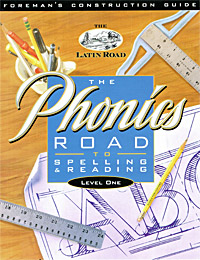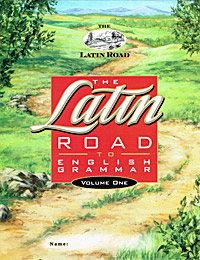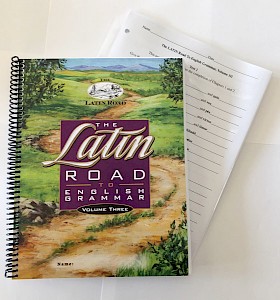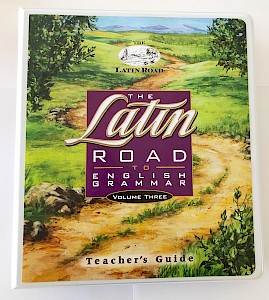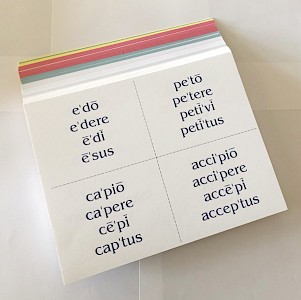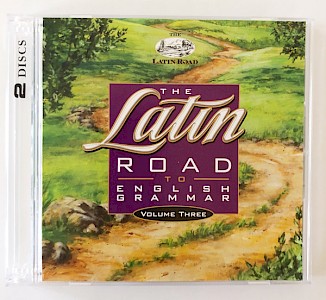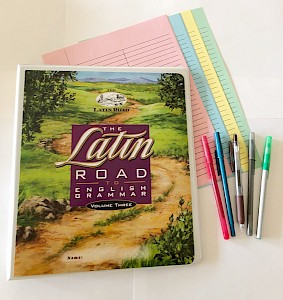The LATIN Road Volume III
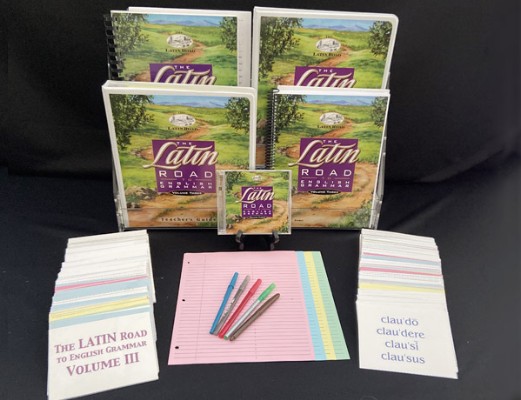
Mastery of Complex Structures of Latin and English
You will notice that the textbook for this year is quite a bit larger due to the more detailed explanations and process steps needed for complex grammar structures. With a firm foundation in the workings of Latin grammar and the unique differences from English grammar, students are ready to tackle the complex sentence structures of both languages. They also complete the most difficult vocabulary studied in high school Latin. This year begins with a comprehensive review of all vocabulary and structures learned in Volumes I and II.
In this volume students finalize their Latin grammar study as they become proficient with relative pronouns and clauses; interrogative pronouns and clauses; fourth conjugation verbs in both active and passive voices, all six tenses of each voice; fourth and fifth declension nouns in all genders; dative of possession; accusative of extent and space; locative case; verbals; compounds of SUM; comparison of adjectives and adverbs; five infinitive forms and uses of infinitives; indirect statements and questions; sequence of tenses; reflexive pronouns and adjectives; dative of purpose; dative of reference; double dative; participial forms and tenses; ablative absolute; four tenses of subjunctive mood; indirect commands and questions; multiple subordinate clauses; purpose clauses; result clauses; cum clauses, and more. Students master over 400 new Latin words from which several thousand English words are derived.
The coordinated English grammar includes direct and indirect statements, questions, and commands; subordination in complex sentences; all adverbial clauses: casual, temporal, concessive, and conditional clauses; interrogative pronouns and adjectives; verbals, participles, gerunds, and infinitives; comparison of adjectives and adverbs; subjective and objective infinitives; subjunctive mood, and more.
The word studies this year focus on the expressing of ideas behind the complex grammar forms, and with the history of many Latin words, students master difficult English vocabulary. With advanced skills in reading Latin, students translate the expanded historical and biblical readings.

